Key Takeaways:
•Bitcoin halving, which is designed to regulate the supply of new BTC tokens, has historically influenced the token’s supply dynamics, market sentiment, and adoption.
• Halvings tend to increase Bitcoin’s popularity, leading to increases in price and adoption. They also stimulate discussion related to blockchain technology, Bitcoin network dynamics, and crypto as a unique asset class.
•While historical patterns show BTC price increases and expanded adoption in the months following halving events, it is important to note that the upcoming April 2024 halving is already proving unprecedented in several important respects.

The Bitcoin halving, an event at the heart of the original cryptocurrency’s value proposition, is more than just a footnote in the history of digital finance; the shift has ramifications across the entire ecosystem, reshaping market dynamics and investor sentiment each time it occurs. In this article, we take a closer look at the multifaceted impacts of the Bitcoin halving on the digital asset industry, revealing its implications beyond short-term price movements. With the next halving event expected to occur in the third week of April and now drawing to a close, a look at historical data is instructive. However, the patterns observed this time around by no means guarantee a similar outcome: the current cycle is unfolding in a unique context and has proven to differ from historical precedent in some important ways.
It’s ancient history
Halving is a fundamental mechanism in the Bitcoin protocol designed to regulate the issuance of new coins by periodically reducing mining rewards. This deliberate reduction, designed to curb the rate at which new Bitcoins are created, plays a key role in shaping Bitcoin's tokenomics and supply dynamics, reinforcing its deflationary nature and underpinning its value proposition. To summarize the basic facts about Bitcoin halving, check out our video explanation:
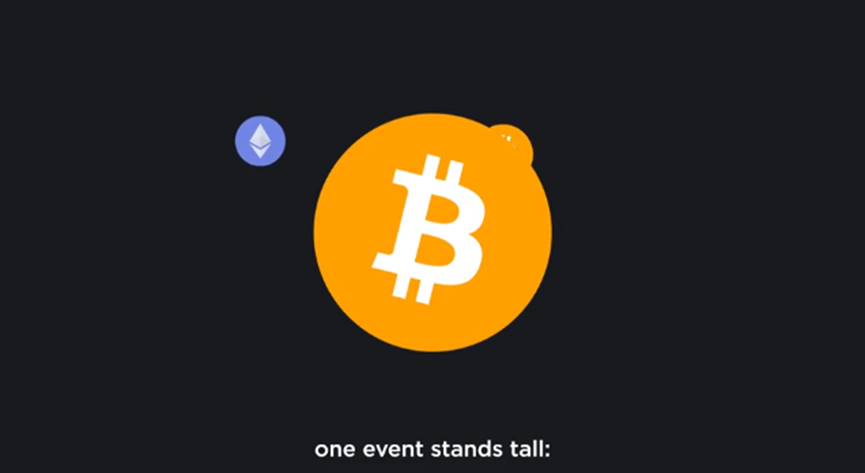
Historically, Bitcoin halvings have had a powerful impact on the crypto industry and the broader financial ecosystem. Tracing the halving events in 2012, 2016, and 2020 through the lens of history, we can observe certain recurring patterns in how halvings affect the crypto world. These events acted as inflection points, catalyzing swings in market sentiment and investor behavior, and interrupting Bitcoin's evolution as the locomotive of the crypto ecosystem.
150 days later
When dissecting the consequences of halving events, one cannot ignore their impact on Bitcoin’s price and market cap. At the heart of the halving mechanism is the principle of scarcity, which attracts investors seeking a limited supply of assets, driving up the value of the asset. Over time, as supply decreases and demand increases, at least in theory, the stage is set for a price increase, which usually materializes gradually over the next few months rather than immediately.
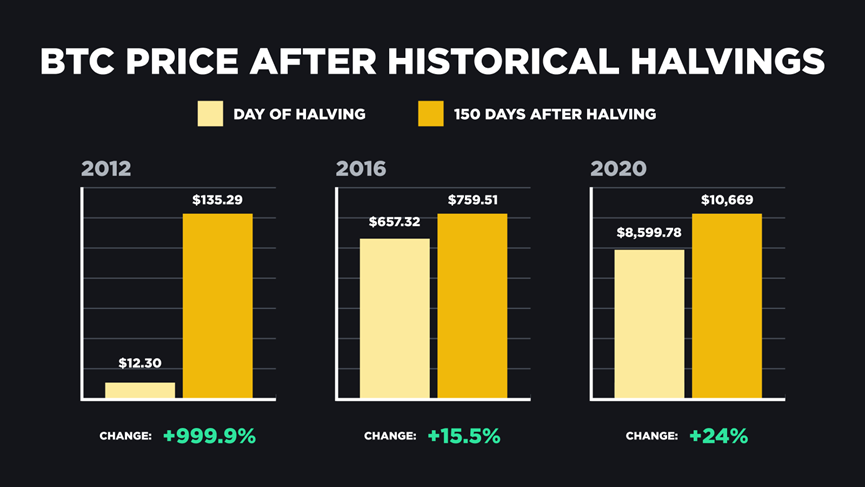
Historically, Bitcoin has experienced significant price increases within 5-6 months after each halving event. For example, within 150 days of the first three halvings in 2012, 2016, and 2020, Bitcoin prices increased by 999%, 15%, and 24%, respectively.
In each four-year period between previous halving events, Bitcoin has reached new all-time highs. In the 2020-2024 cycle, this all-time high was achieved in October 2022, when Bitcoin surpassed the $66,000 mark. The upcoming 2024 halving is unique in that for the first time in its history, Bitcoin reached a new all-time high before the halving in early March 2024. Whether this is a warm-up before setting new highs after the halving, or a premature reaching of the coveted highs, remains to be seen.
The mechanism by which halvings affect prices may be through shaping market sentiment and investor perception. In addition to building expectations in the crypto community, halving events also drive narratives about the advantages of algorithmic monetary policy and the deflationary nature of digital assets, sparking interest from outside the crypto space and driving new players into the space.
Beyond Price
In addition to price-related effects and increased attention (partially through these effects), halvings are also associated with profound, long-term growth in adoption metrics. Bitcoin’s increased visibility before and after the halvings incentivizes more newcomers to explore and potentially buy the digital currency, helping to expand its user base.
Additionally, Bitcoin’s halving has prompted miners to re-evaluate the cryptocurrency’s underlying technology and network dynamics as miners undergo a transformation. Discussions are growing around network security, transaction fees, and scalability solutions. Enhancements in these areas strengthen the robustness of the Bitcoin network and increase confidence among users and businesses, thereby creating a favorable environment for Bitcoin adoption. Halvings also tend to reduce miners’ profit margins, thereby generating additional Bitcoin selling pressure from miners and accelerating the consolidation of mining operations and mining pools.
With each halving event, the need for efficiency and innovation becomes more evident, driving technological advancements that not only improve the performance of the Bitcoin network but also increase its appeal to a wider audience.
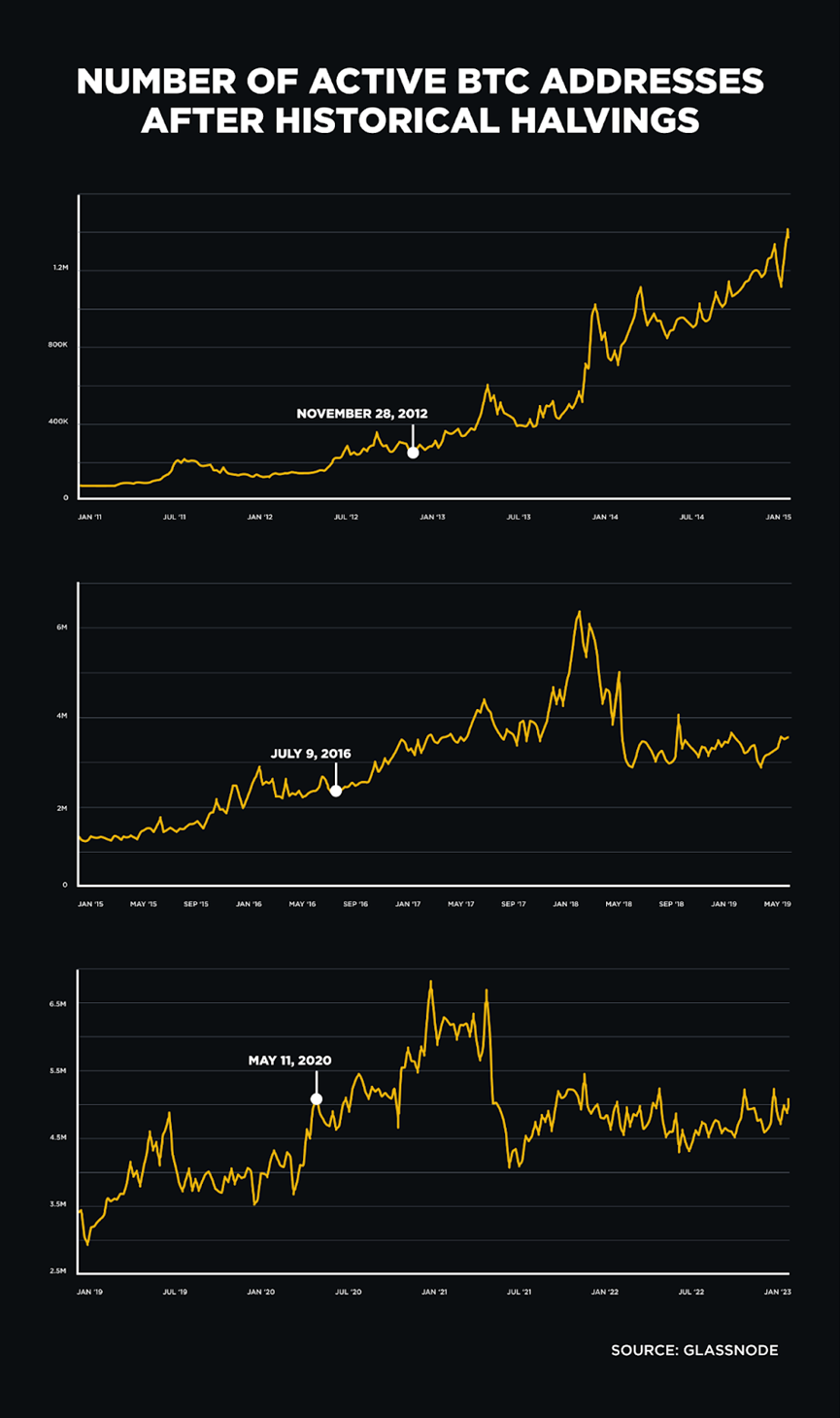
Let’s look at a simple adoption metric — the number of active Bitcoin addresses — using the same 150-day window as the price dynamics. In the 150 days leading up to each previous halving, the number of new Bitcoin addresses grew: 83% in 2012, 101% in 2016, and 11% in 2020.
The number of addresses holding $100 or more (a rough proxy for the number of retail investors) grew by 12% in 2012 and 6% in 2020, and remained essentially unchanged in the 150 days following the 2020 halving. While these are imperfect indicators of adoption dynamics and sentiment (for example, a single person can create multiple wallets), they indicate the directionality and magnitude of trends following past halvings.
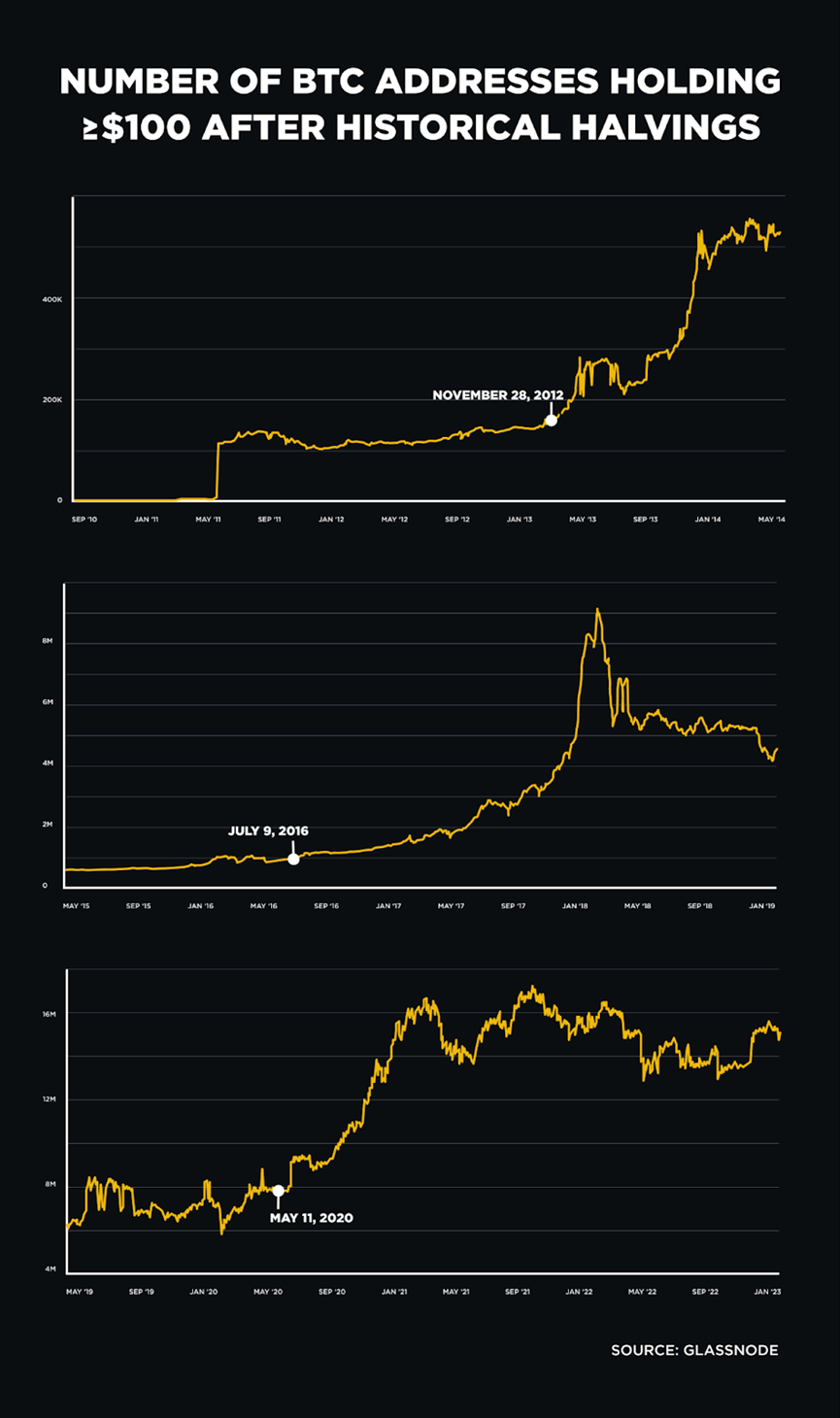
Similarly, institutional interest in Bitcoin tends to surge around halving events, driven by Bitcoin's ability to serve as a store of value and a potential hedge against inflation. High-profile endorsements from corporate bonds and well-known investors confirm the legitimacy of Bitcoin as an investable asset class, further driving Bitcoin's adoption. As institutional capital flows into the cryptocurrency market, infrastructure and products emerge, paving the way for widespread adoption of cryptocurrencies by traditional financial institutions and retail investors.
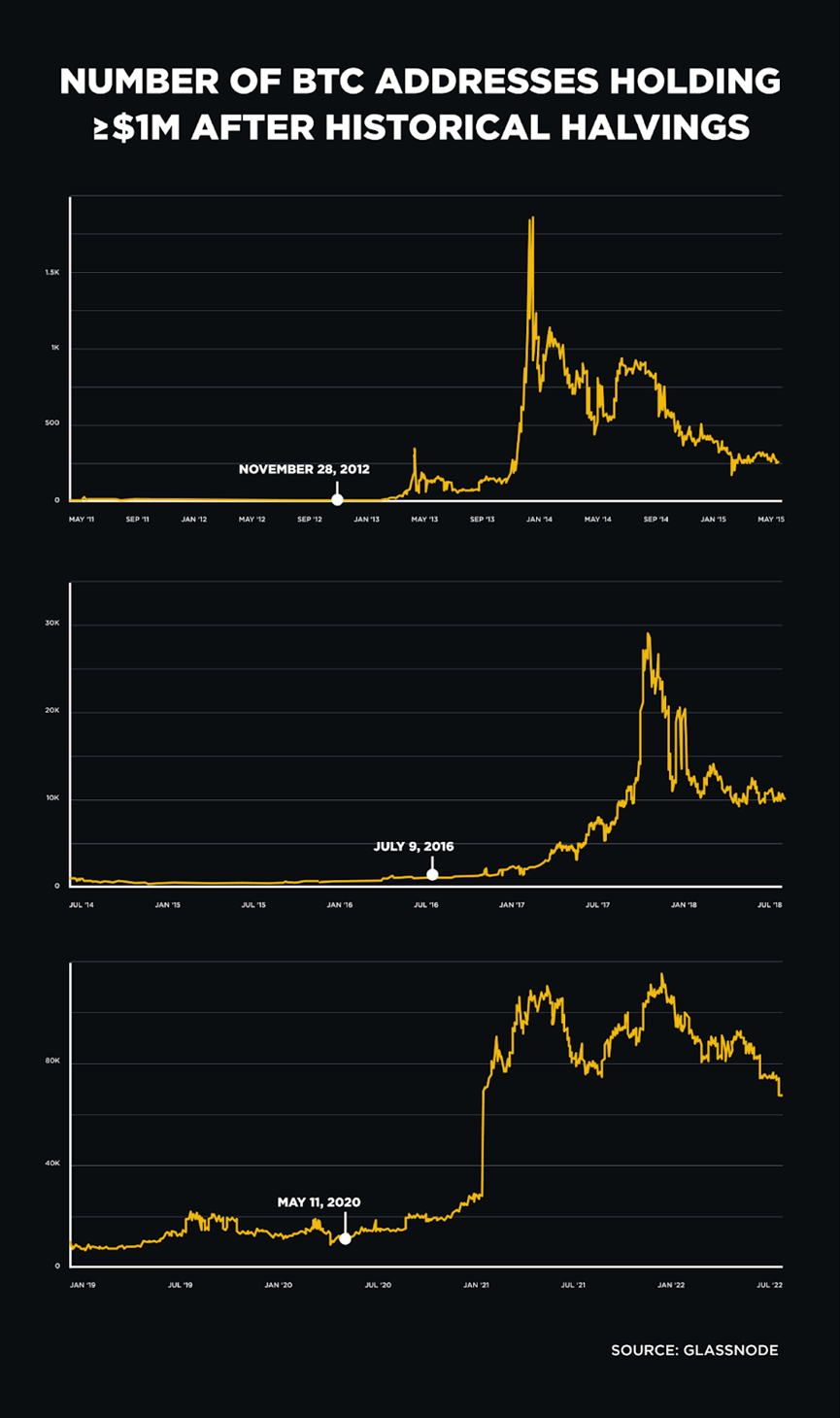
For example, the number of wallets holding more than $1 million, which can be seen as an indicator of professional or institutional investment activity, grew by thousands of percentage points in 2012, 10% in 2016, and 43% in 2020.
What's next?
The next Bitcoin halving will take place in April, against the backdrop of strong capital inflows into the Bitcoin industry and centralized exchanges like Binance, as well as the approval of a spot Bitcoin ETF in the United States, which has promoted a boom in institutional participation.
Coupled with a surge in second-layer solutions and DeFi activity that enhance the actual utility of the network, this setup is starting to look very bullish for the Bitcoin ecosystem and the broader crypto space.
However, it is important to remember that despite the auspicious backdrop surrounding the 2024 halving, there is no guarantee that its dynamics and impacts will mirror those of previous halving events. Each halving represents a unique node in Bitcoin’s evolution, influenced by changing market conditions, technological advances, and regulatory developments. Therefore, despite optimism surrounding the transformative potential of the 2024 halving, caution requires acknowledging the inherent unpredictability of market dynamics and the need to remain vigilant when navigating the evolving landscape of digital assets.
Each Bitcoin halving represents a fundamental shift in the crypto industry, with profound implications for adoption and market evolution. In addition to its direct impact on price and investor sentiment, Bitcoin halvings foster interest and awareness, institutional participation, and technological innovation, laying the foundation for the continued growth and maturity of digital finance. As we navigate the evolving crypto landscape, the significance of Bitcoin halvings demonstrates the enduring strength and resilience of our industry.






